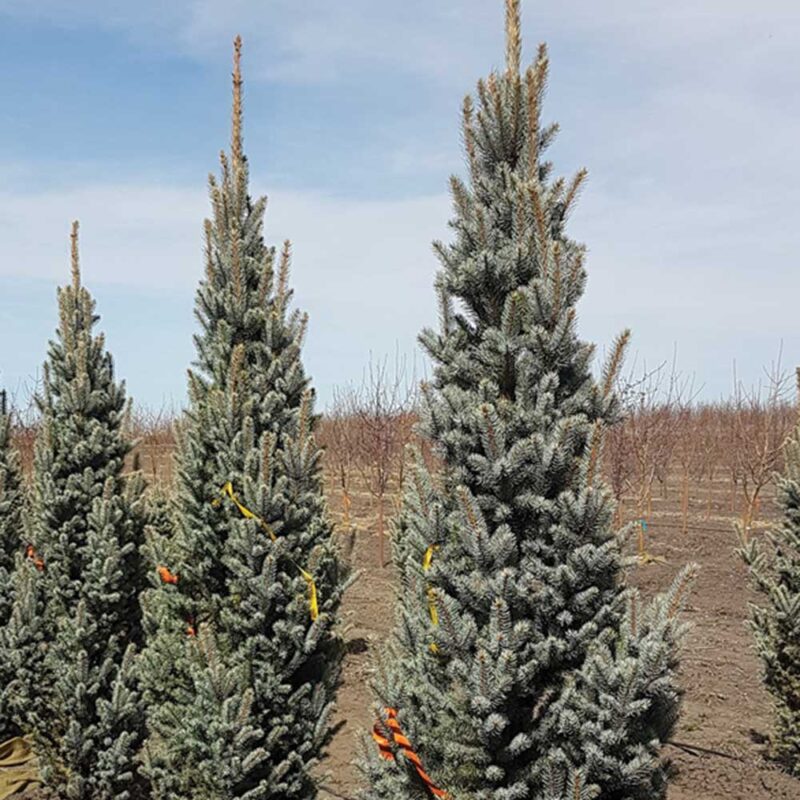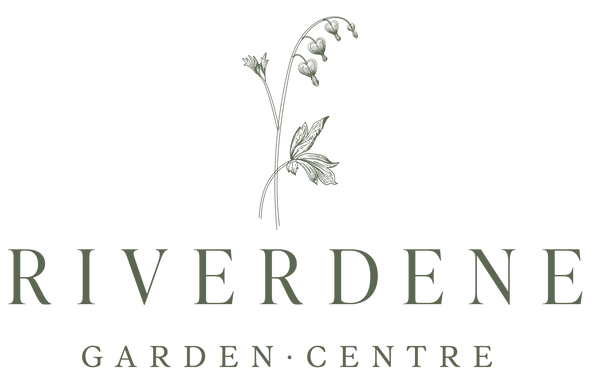1
/
of
1
Riverdene Garden Center
Columnar Blue Spruce
Columnar Blue Spruce
Regular price
$114.99 CAD
Regular price
Sale price
$114.99 CAD
Unit price
/
per
Couldn't load pickup availability
Picea pungens 'Fastigiata'
Columnar Blue Spruce is a narrow, upright evergreen with the classic blue-gray needles of the traditional Colorado Blue Spruce but in a more compact, vertical form. It is an excellent choice for windbreaks, privacy screens, and small spaces, and it thrives in cold, dry prairie climates (Zone 3), making it well-suited for Southwest Saskatchewan.
Planting & Location
- Hardiness Zone: 2-7 (extremely cold-hardy)
- Mature Size: 20-30 feet tall, 6-10 feet wide
- Growth Rate: Moderate (6-12 inches per year)
- Sunlight Needs: Full sun (6+ hours of direct sunlight per day)
-
Soil Preference:
- Prefers well-drained, sandy or loamy soil.
- Tolerates rocky, dry, or poor soils.
- Performs best in slightly acidic to neutral soil (pH 5.5-7.5).
- Avoid heavy clay or waterlogged soil—spruces dislike "wet feet."
-
Spacing:
- 6-8 feet apart for a dense windbreak or privacy screen.
- 10+ feet apart for individual specimen trees.
Watering
- Young Trees (First 2-3 Years): Deep water once per week to encourage root establishment.
- Established Trees: Drought-tolerant but benefits from deep watering every 2-3 weeks in dry periods.
- Winter Watering: If fall is dry, provide one last deep watering before the ground freezes.
Fertilizing
- First Year: No fertilizer needed—focus on root establishment.
-
Mature Trees:
- Apply a slow-release evergreen fertilizer (e.g., 10-10-10 or 12-6-6) in early spring.
- Organic alternative: Compost or aged manure as mulch in spring.
Pruning & Maintenance
- Best Time to Prune: Late winter to early spring, before new growth starts.
-
How to Prune:
- Remove dead, damaged, or crossing branches.
- Maintain a strong central leader—do not top the tree.
- Trim back side branches lightly if needed to maintain a tight, columnar shape.
- Avoid heavy pruning, as spruces do not regenerate from old wood.
Pest & Disease Management
Common Pests:
-
Spruce Spider Mites – Can cause needle discoloration.
- Solution: Hose off with water or use insecticidal soap.
-
Aphids – Can cause needle drop.
- Solution: Encourage natural predators like ladybugs.
-
Sawflies – Chew on needles.
- Solution: Hand-pick larvae or use insecticidal soap.
Common Diseases:
-
Cytospora Canker – Causes branch dieback with resin oozing from the trunk.
- Solution: Prune infected areas and improve tree health.
-
Rhizosphaera Needle Cast – Causes needles to brown and drop.
- Solution: Ensure good air circulation and apply fungicide if needed.
-
Root Rot (Phytophthora, Armillaria) – Occurs in waterlogged soils.
- Solution: Plant in well-drained soil and avoid overwatering.
Winter Protection
-
Young Trees:
- Protect from winter sunscald and drying winds by wrapping trunks with burlap or tree guards.
-
Mulching:
- Apply 2-4 inches of mulch around the base to insulate roots from extreme cold.
-
Deer & Rodents:
- Deer-resistant, but young trees may need protection from rabbits and voles in winter.
Landscape Uses
Ideal for narrow spaces and small yards
Great windbreak, privacy screen, or focal point
Low-maintenance and drought-resistant once established
Retains its blue color year-round
Deer-resistant and cold-hardy
Additional Notes:
- Columnar Blue Spruce is an excellent alternative to larger evergreens when space is limited.
- Lifespan: Can live 50+ years with proper care.
- Works well in formal landscapes, mixed borders, and modern gardens.
Photo courtesy of Foothills Nursery
Share


